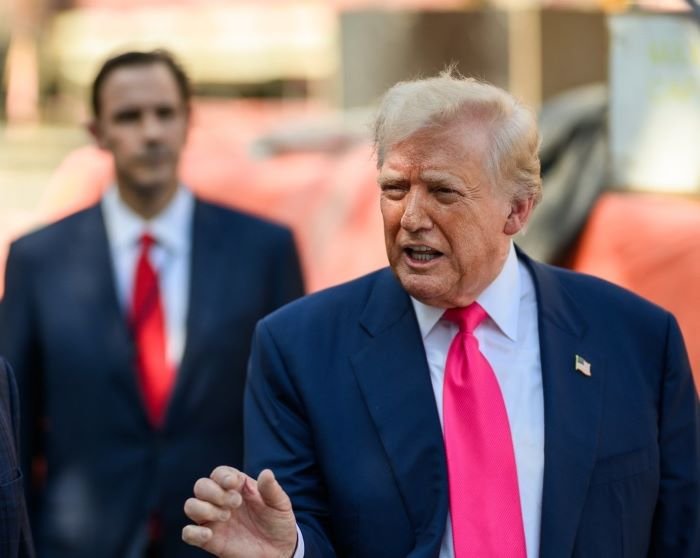Washington (TDI): President Donald Trump’s higher tariff rates of 10% to 50% on dozens of trading partners started on Thursday, testing his strategy to reduce the US trade deficit without triggering major economic shocks, inflation, or retaliation from affected nations.
The US Customs and Border Protection began implementing the new tariffs just after midnight Eastern Time. Under a special provision, goods already en route to the United States before the deadline can still be imported at the earlier, lower rate, provided they arrive by October 5.
In recent months, Trump has repeatedly adjusted his tariff approach. While some countries have seen steep increases, Brazil faces a 50% rate, Switzerland 39%, Canada 35%, and India 25%, others have managed to secure more favorable terms.
For instance, the European Union, Japan, and South Korea reached framework deals with the US, reducing their tariffs to 15%. The UK locked in a 10% rate, while Vietnam, Indonesia, Pakistan, and the Philippines managed to negotiate rates just under 20%.
Read More: India in Trump’s Crosshairs: President Threatens to Raise Tariffs Further
Trump also announced an upcoming 25% tariff on Indian imports, tied to India’s ongoing oil trade with Russia. That duty is set to be enforced within three weeks.
Taking to Truth Social just before the tariffs kicked in, Trump wrote in capital letters, “RECIPROCAL TARIFFS TAKE EFFECT AT MIDNIGHT TONIGHT! BILLIONS OF DOLLARS… WILL START FLOWING INTO THE USA.”
Adding to the complexity, goods rerouted through third-party countries to bypass tariffs will face an extra 40% duty. However, there’s still uncertainty over how such violations will be detected or enforced.
Read More: Trump Imposes Tariffs on 69 Countries, Including 19% on Pakistani Goods
This move is just one piece of Trump’s broader tariff agenda, which also includes targeted duties on high-tech and strategic sectors such as semiconductors, steel, aluminum, autos, and pharmaceuticals. Trump even hinted that chip-related tariffs could surge up to 100%.
Meanwhile, China remains in a separate negotiation track. Unless an agreement is reached, tariffs on Chinese goods could climb further after August 12, especially as Trump considers further action against Chinese purchases of Russian oil.
Farkhund Yousafzai is an Associate Editor at The Diplomatic Insight.



